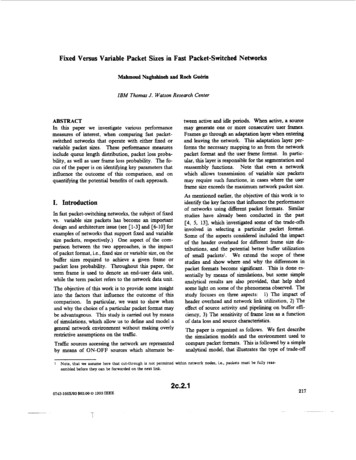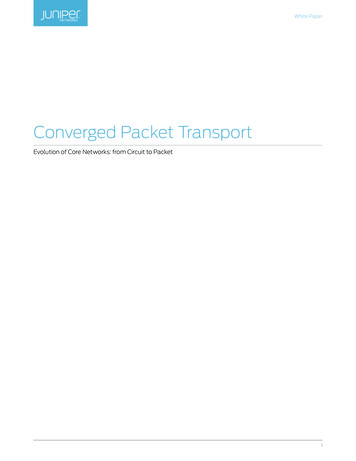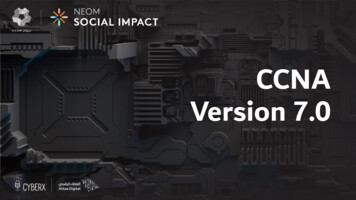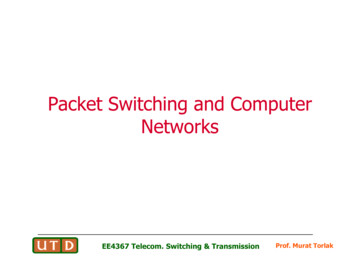
Transcription
Packet Switching and ComputerNetworksEE4367 Telecom. Switching & TransmissionProf. Murat Torlak
Switching As computer networks became more pervasive, more and more data and also less voicewas transmitted over telephone lines. Circuit Switching The telephone network used circuit switching. Circuit switching operates by firstreserving a complete route from the sender to the receiver. This bandwidth does notchange during a call, and remains reserved even if the connection is not transmitting anydata but is still active. An example follows: A fixed bandwidth will be reserved at S1,S2,S4,S5, and S7 for the durationEE4367 Telecom. Switching & TransmissionProf. Murat Torlak
Packet Switching Packet switching is similar to message switching using shortmessages. Any message exceeding a network-definedmaximum length is broken up into shorter units, known aspackets, for transmission; the packets, each with anassociated header, are then transmitted individuallythrough the network. The performance of Packet Switching is called Best Effortperformance. If you transmit from sender to receiver, allthe network will do its best to get the packet to the otherend as fast as possible, but there are no guarantees on howfast that packet will arrive.EE4367 Telecom. Switching & TransmissionProf. Murat Torlak
Packet Formats A packet contains three major fields: The header, the message, and redundancy check bits Most popular technique uses cyclic redundancy checks (CRCs) CRC is nothing more than a set of parity bits that coveroverlapping fields of message bits. CRC can detect small number of errors A header typically contain numerous subfields in addition tothe necessary address fieldMessageEE4367 Telecom. Switching & TransmissionProf. Murat Torlak
Message Switching Packet switching has its origin in message switching A message switch typically operates in the store-andforward fashion Message has to be completely received and stored by theswitch before it can be forwarded to the next switch.EE4367 Telecom. Switching & TransmissionProf. Murat Torlak
Delays in Message switching Minimum delay in message swicthingEE4367 Telecom. Switching & TransmissionProf. Murat Torlak
Datagram Packet Switching Each packet is routed independently through network It is also called connectionless packet-switching Routers in the internet are packet switches that operate indatagram modeEE4367 Telecom. Switching & TransmissionProf. Murat Torlak
Delay Calculations Delay in datagram packet switching Assume P T/3 is required to transmitEE4367 Telecom. Switching & TransmissionProf. Murat Torlak
Virtual--Circuit Packet SwitchingVirtual VC packet switching involves the establishment of a fixedpath, often called a virtual circuit or a connectionEE4367 Telecom. Switching & TransmissionProf. Murat Torlak
Congestion CongestionEE4367 Telecom. Switching & TransmissionProf. Murat Torlak
Reference Models The OSI Reference Model The TCP/IP Reference Model A Comparison of OSI and TCP/IPEE4367 Telecom. Switching & TransmissionProf. Murat Torlak
Layering LayeringEE4367 Telecom. Switching & TransmissionProf. Murat Torlak
Protocol Hierarchies Layers, protocols, and interfaces.EE4367 Telecom. Switching & TransmissionProf. Murat Torlak
Open Systems Interconnection (OSI) OSI partioned the communication process into seven layersand provided a framework for talking about the overallcommunication process. The OSI work also provided a unified view of layers,protocols, and services. This unified view has provided the basis for thedevelopment of networking standards to the present day.EE4367 Telecom. Switching & TransmissionProf. Murat Torlak
Reference ModelsThe OSIreferencemodel.EE4367 Telecom. Switching & TransmissionProf. Murat Torlak
Services to Protocols Relationship The relationship between a service and a protocol.EE4367 Telecom. Switching & TransmissionProf. Murat Torlak
OSI Reference Model The early network architectures developed by variousvendors were not compatible with each other. This desire led to an effort to develop a reference modelfor open system interconnection (OSI) OSI reference model partitioned the communicationsprocess into seven layers provided a framework for talkingabout the overall communications process and hence wasintended to facilitate the development standards. The OSIwork also provided a unified view of layers, protocols, andservices.EE4367 Telecom. Switching & TransmissionProf. Murat Torlak
The sevenseven-layer OSI Model OSI reference modelEE4367 Telecom. Switching & TransmissionProf. Murat Torlak
OSI Layers Physical layer deals with transfer of bits over acommunication channel Data link layer provides for the transfer of frames across atransmission link (dialup modems use PPP) Network layer provides for transfer of data in the form ofpackets across a communication network. Addresing andcongestion are dealt with network layer Transport layer is responsible for the end-to-end transfer ofmessages from a process in the source machine to aprocessin the destination machine. TCP/IP networks, access the transport layer Setting up and releasing connections across the networkEE4367 Telecom. Switching & TransmissionProf. Murat Torlak
OSI Layers Session layer can be used to control the manner in whichdata are exchanged. Certain applications require a halfduplex dialog where the two parties take turns transmittinginformation Presentation layer is intended to provide the applicationlayer with independence from differences in therepresentation of data. For example, different computersuse different codes for representing characters andintegers, and also different conventions as to whether thefirst bit or last bit is the most significant bit. Application layer provides services that are frequentlyrequired by the applications involve communications. Ex:HTTP, FTP, emailEE4367 Telecom. Switching & TransmissionProf. Murat Torlak
Headers and TrailersEE4367 Telecom. Switching & TransmissionProf. Murat Torlak
TCP/IP Reference Model The TCP/IP reference model.EE4367 Telecom. Switching & TransmissionProf. Murat Torlak
TCP/IP Protocol GraphEE4367 Telecom. Switching & TransmissionProf. Murat Torlak
Routing Routing the packetsEE4367 Telecom. Switching & TransmissionProf. Murat Torlak
HTTP ExampleEE4367 Telecom. Switching & TransmissionProf. Murat Torlak
ApplicationEE4367 Telecom. Switching & TransmissionProf. Murat Torlak
Reference Models Protocols and networks in the TCP/IP model initially.EE4367 Telecom. Switching & TransmissionProf. Murat Torlak
Network StandardizationITU Main sectors Radiocommunications Telecommunications Standardization Development Classes of Members National governments Sector members Associate members Regulatory agenciesEE4367 Telecom. Switching & TransmissionProf. Murat Torlak
IEEE 802 StandardsThe 802 working groups. The important ones aremarked with *. The ones marked with arehibernating. The one marked with † gave up.EE4367 Telecom. Switching & TransmissionProf. Murat Torlak
Business Applications of Networks A network with two clients and one server.EE4367 Telecom. Switching & TransmissionProf. Murat Torlak
Home Network Applications Access to remote information Person-to-person communication Interactive entertainment Electronic commerceEE4367 Telecom. Switching & TransmissionProf. Murat Torlak
Network Hardware Local Area Networks Metropolitan Area Networks Wide Area Networks Wireless Networks Home Networks InternetworksEE4367 Telecom. Switching & TransmissionProf. Murat Torlak
Local Area Networks Two broadcast networks Bus RingEE4367 Telecom. Switching & TransmissionProf. Murat Torlak
Metropolitan Area Networks A metropolitan area network based on cable TV.EE4367 Telecom. Switching & TransmissionProf. Murat Torlak
Wide Area Networks Relation between hosts on LANs and the subnet.EE4367 Telecom. Switching & TransmissionProf. Murat Torlak
Wide Area Networks (2) A stream of packets from sender to receiver.EE4367 Telecom. Switching & TransmissionProf. Murat Torlak
Wireless Networks Categories of wireless networks: System interconnection Wireless LANs Wireless WANsEE4367 Telecom. Switching & TransmissionProf. Murat Torlak
Wireless Networks (2) Bluetooth configuration Wireless LANEE4367 Telecom. Switching & TransmissionProf. Murat Torlak
Wireless Networks (3) Individual mobile computers A flying LANEE4367 Telecom. Switching & TransmissionProf. Murat Torlak
As computer networks became more pervasive, more and more data and also less voice was transmitted over telephone lines. Circuit Switching The telephone network used circuit switching. Circuit switching operates by first reserving a complete route from the sender to the receiver. This bandwidth does not
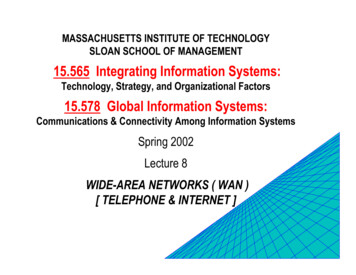
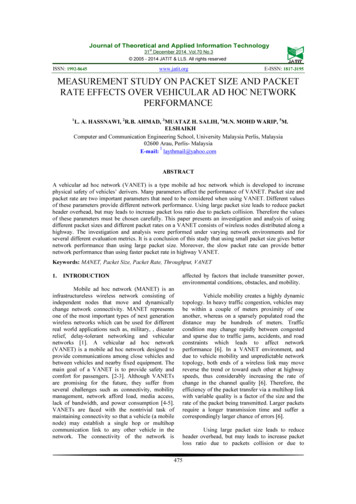
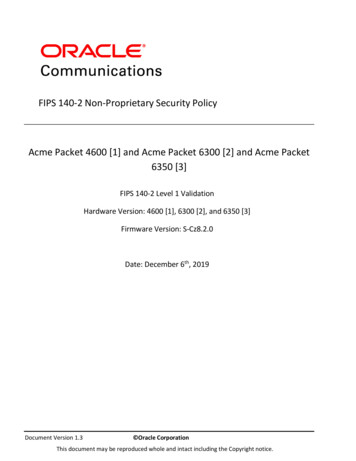
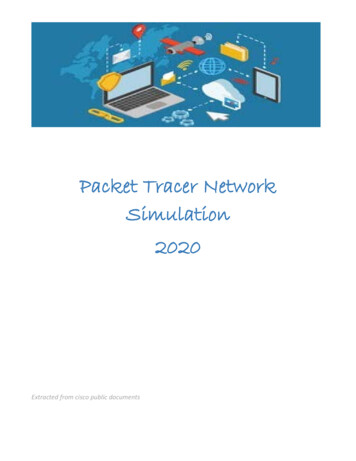
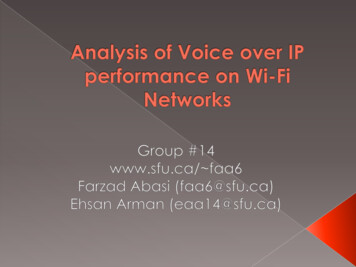
![FIPS 140-2 Non-Proprietary Security Policy Acme Packet 1100 [1] and .](/img/49/140sp3490-5601486.jpg)
